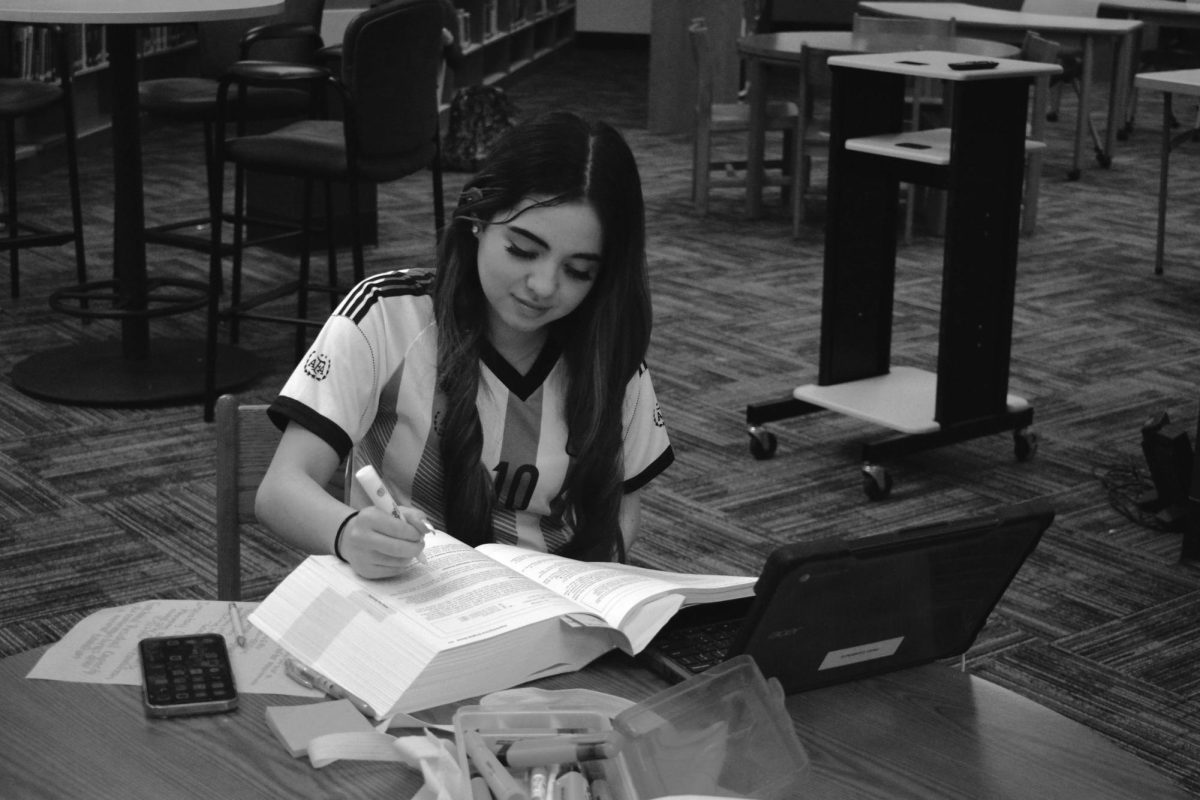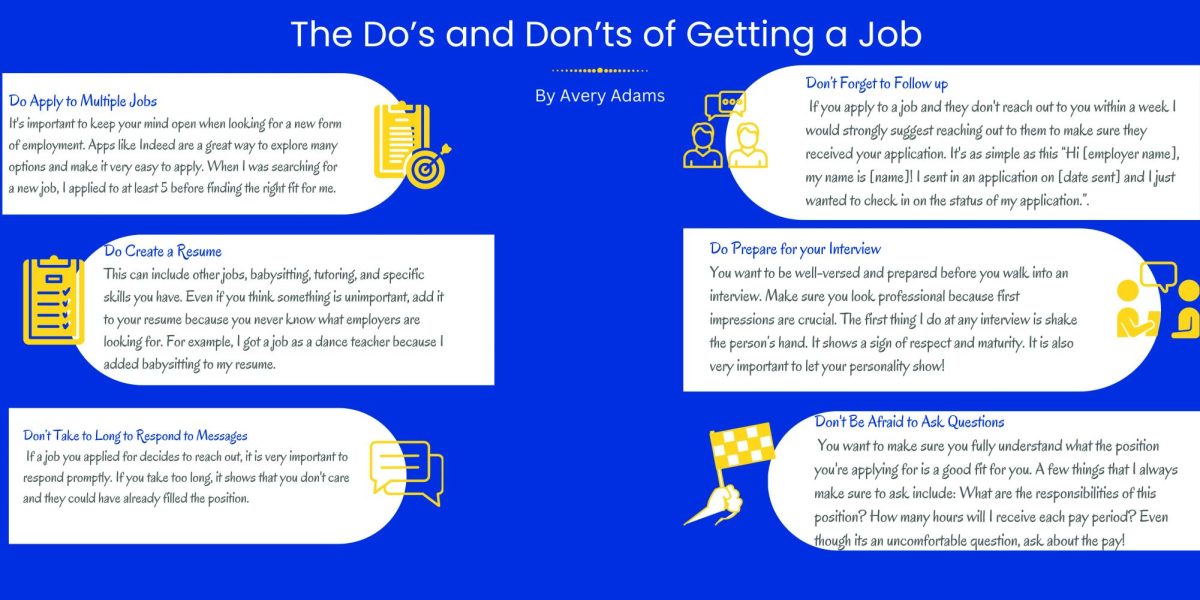As virtual classes continue to offer students a flexible alternative to traditional learning, many high schoolers are discovering the pros and cons of managing their own education outside the classroom. While some embrace the freedom, others find it comes with unexpected challenges.
Senior Charan Ramidi is currently enrolled in four online classes, and his decision to pursue them was intentional.
“I prefer learning at my own pace and find it less stressful than in-person classes,” Ramidi said.
For Ramidi, the biggest advantage of virtual learning is the autonomy it grants. Without the constraints of a traditional schedule, he feels more relaxed and empowered to organize his day in a way that suits him.
“It gives me more control over my schedule,” Ramidi said. “It’s definitely less stressful and helps me focus on other activities and responsibilities.”
Junior Candelaria Perez shares a similar sentiment. Although she is taking just one virtual class—an ACT prep course not provided by the school in person—she appreciates the independence it provides.
“I’m more focused during the class because I can take it at my own pace,” Perez said. “And if I need help, the teacher is really easy to reach out to for one-on-one time, which is harder in regular classes where teachers are busy.”
While some students thrive with this newfound freedom, others recognize that it can be a double-edged sword. Senior Jonathan Chin, who is taking an online Korean class, admits that his time management skills have been both tested and strengthened by the virtual format.
“I can not care about it the whole semester and then finish all the class work on the final day and still get an A,” Chin said. “It shows that I had no time management, but it also shows how I can micromanage every second I have in that one day.”
Chin’s humorous take highlights a real issue many students face: without regular deadlines and face-to-face accountability, procrastination becomes a real temptation. Ramidi echoed this point, saying that while he generally stays on top of his work, the asynchronous nature of his classes sometimes leads to putting off assignments.
“I sometimes procrastinate because the assignments are easy, and it’s tempting to delay when there’s no set time to do them,” Ramidi said.
Perez, however, has found a different experience. Despite joining her online course late and having to catch up initially, she credits virtual learning with improving her time management skills.
“I was able to finish the entire semester course a month before it actually ended,” Perez said. “That gave me more time to review for finals and made me feel more prepared.”
Alongside issues of time management, the question of academic honesty is another key consideration for online learning. All three students acknowledged that cheating is easier in a virtual environment.
“I do think online learning makes it much easier for students to cheat, since there is less direct supervision,” Ramidi said.
Perez agreed, noting that while finals in her course were proctored to prevent dishonesty, it is still easier for students to misuse resources during the semester.
“You can’t cheat on the final, but during the semester, it’s definitely easier if you wanted to,” Perez said.
Chin offered a candid view of how easy it is for some students to use AI tools or search engines to complete work. However, he also pointed out that there can be consequences.
“I know a lot of people that cheat, but one time somebody used AI for an art appreciation class and they got zeros on their assignments,” Chin said. “Now they’re failing.”
Despite these challenges, none of the three students reported feeling particularly isolated because of their online classes. Ramidi, who maintains an active social life outside of school, said he never felt disconnected from others.
“I still have a strong social life, which keeps me balanced,” Ramidi said.
Perez noted that because much of schoolwork is independent anyway, the switch to virtual learning didn’t affect her social experience significantly.
“School is generally independent work anyways,” Perez said. “I don’t feel like I’m missing valuable time with friends.”
Chin, however, described his experience with characteristic humor and honesty. He acknowledged the sense of isolation but tried to see the silver lining.
“In person, you sit with friends, but in my online course, while I’m doing all my work, I sit in my closet to feel even more isolated,” Chin said. “I cry while I do the work, but it also makes me focus.”
When it comes to whether the average high school student is ready for the freedom and responsibility of virtual classes, opinions varied slightly but remained generally optimistic.
Ramidi believes that with some organization, most students can handle the independence.
“Virtual classes don’t require a huge amount of responsibility if you stay organized,” Ramidi said.
Perez agreed, emphasizing that self-regulation is a vital skill for teenagers to learn.
“They should be able to regulate themselves,” Perez said. “They’re old enough to help themselves and should have the maturity to be successful.”
Chin took a more cautious approach, suggesting that while many students are not naturally ready, the experience itself can be a valuable lesson in independence.
“Based off of me, definitely not,” Chin said. “But I think this is a good chance for seniors to learn about independence and how to manage their schedules, because that’s what you’re going to have to do in college.”
The students also noticed a stark difference in engagement levels between online and traditional classes. Ramidi and Perez both pointed out that there’s simply less real-time interaction in virtual settings.
“There’s definitely less engagement and interaction in online classes,” Ramidi said. “There are fewer discussions and real-time conversations.”
Perez added that asynchronous courses make it harder to communicate quickly with teachers, though she found ways around that issue.
“If I needed a fast response, I would just text my teacher through iMessage,” Perez said.
If given the chance to improve virtual learning, each student had different suggestions. Ramidi called for more direct and frequent communication from teachers to make expectations clearer. Perez felt the structure of her online class was already good but emphasized the importance of accessible communication channels. Chin recommended that schools use a simpler and more familiar platform for online courses.
“My class was through Mizzou and used Canvas, which was pretty hard to navigate,” Chin said. “Maybe they should use something more similar to what we use at school.”








